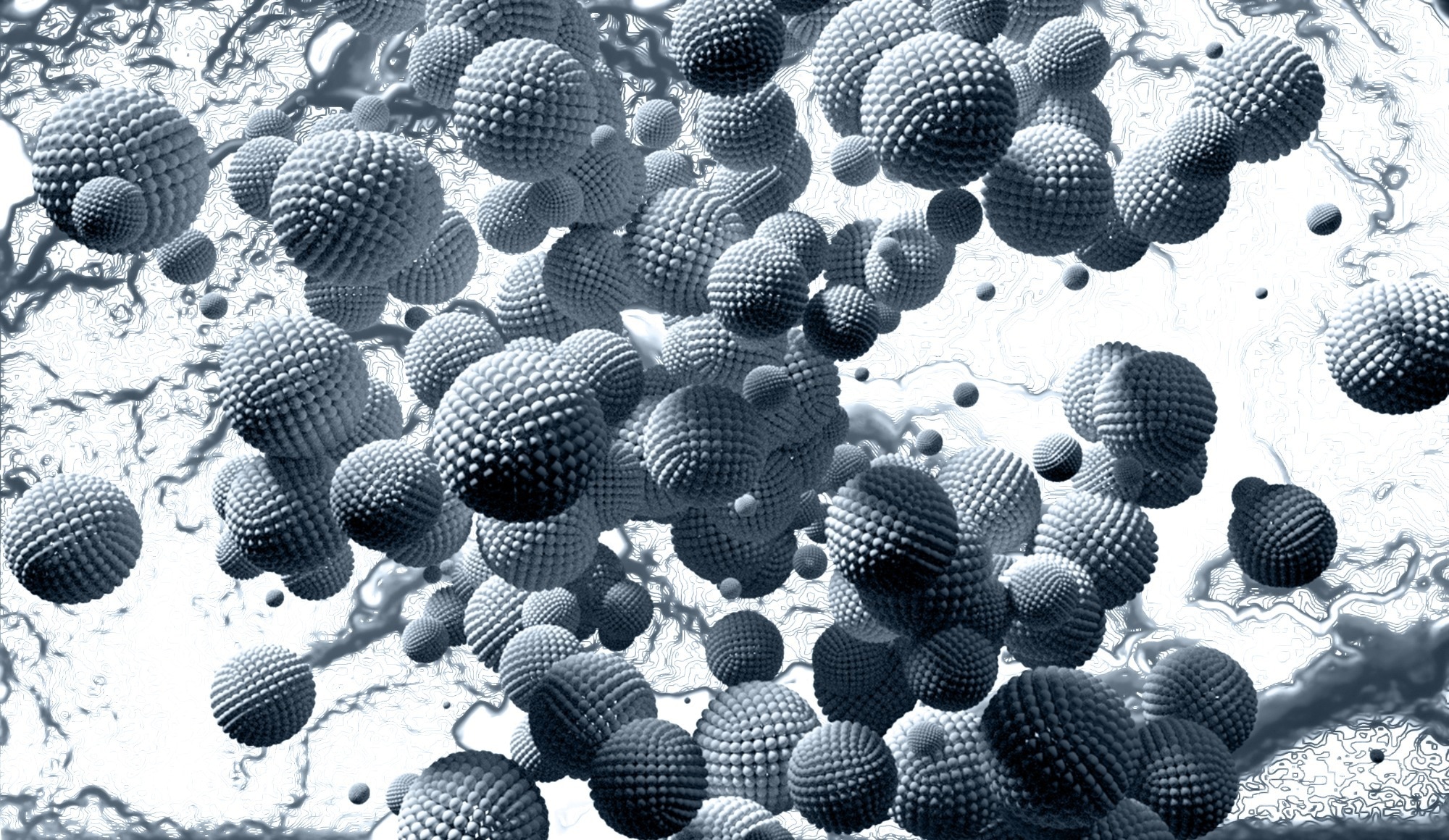Controllable loading and monitoring of cargo molecules in real-time is critical in developing intelligent nanorobots. In an article recently published in the journal ACS Nano, gold (Au) nanodots encapsulated silica (SiO2) nanoparticles were prepared and grafted externally with poly(N-isopropyl acrylamide) (PNIPAM), thereby achieving temperature-responsive nanorobots.

Study: Enzyme-Powered Hollow Nanorobots for Active Microsampling Enabled by Thermoresponsive Polymer Gating. Image Credit: GiroScience/Shutterstock.com
The temperature-regulated molecular gates of nanochannels on the external PNIPAM shell allowed access to an internal hollow reservoir, wherein the swap between “open” and “closed” states of the gates were temperature-regulated, allowing on-demand release or loading of small molecules. The Au nanodots embedded with surface-enhanced Raman scattering (SERS) probes promoted the molecular cargo load real-time detection inside the hollow nanorobots.
The prepared nanorobots were endowed with self-propulsion behavior, driven by enzymatic reactions. This propelling behavior of the nanorobots regulated the molecular cargo’s loading efficiency. Additionally, incorporating nickel (Ni) into nanorobots enabled the magnet-guided transportation of cargo molecules under real-time Raman monitoring. Thus, with the help of the current strategy, the researchers demonstrated a scope for manipulable nanorobots in biomedical sampling to promote effective disease diagnosis or drug delivery.
Nanorobots in Biomedical Applications
Sampling robots have gained recent research interest for their biomedical applications and were explored for physical and structural features to enable their practical application and commercialization in biomedical and environmental fields. The robot-based system can mimic the functionality of a human arm to hold and carry objects via a predesigned procedure. Nanorobots have found their applications in delivering cargos to designated sites in organisms under laboratory conditions. Despite this development, estimating nanorobot risks and exploring their potential regulation remain practically unexplored.
Self-propelling nanorobots convert different energy forms into kinetic energy for their mechanical movement. The functionality of nanorobots inside a living system can be tuned by altering their structural features. Moreover, owing to their untethered motions, nanorobots have found their applications in biomedical applications such as biological surgery, drug delivery, biosensing, and bioimaging.
For practical applications of nanorobots in biomedical diagnosis and treatment, it is essential to control the nanorobot’s motion via in situ monitoring of the sampling molecules. Previously reported uses of nanorobots in biomedical applications include nanorobots with rough surfaces for preferential attachment of cancer cells in metastatic and primary lesions and antimicrobial nanorobots whose working was based on the principle of antibody−antigen interactions to capture Escherichia coli.
Enzyme-Powered Nanorobots
In the present study, Au nanodots encapsulated hollow mesoporous SiO2 nanoparticles (HMSNPs) were fabricated with internally decorated SERS probes that monitor the in situ loading of cargo molecules. The externally grafted polymer, PNIPAM, is endowed with temperature-responsive gates, regulating the “open”/ “closed” nanochannel’s control to access the internal hollow reservoir. The urease enzyme was incorporated to prepare enzyme-driven nanorobots, which decompose substrate molecules with in situ availability via enzyme-catalyzed reaction and achieve self-propulsion to regulate the cargo loading efficiency.
Although the urease-driven motion of PNIPAM grafted Au nanodots loaded SiO2 nanoparticles (Au@SiO2@PNIPAM or ASPU) improved the cargo-loading performance of nanorobots, their self-propulsion lacked directionality. To this end, the incorporation of Ni served in magnetic actuation to precisely control the movement of the nanorobots.
Initially, the Ni-incorporated ASPU nanoparticles (ASPU@Ni)-based nanorobots were injected into a clean area of a test chamber (fabricated via 3D printing) at a temperature of 37 degrees Celsius to demonstrate the temperature-sensitive working of the gate of nanorobots, which were in the closed state.
Later, the magnetic gradient on ASPU@Ni generated a dragging force through which the nanorobots traveled to the loading area along the predesigned channel. Thus, the sampling nanorobots endowed with the functionality of active sensing could pave a path toward the next-generation intelligent biomedical nanorobots leading to their application in advanced theranostics.
Conclusion
To summarize, magnetically directing and self-propelling nanorobots were constructed based on ASPU nanoparticles. These nanorobots consisted of an Au@SiO2-based hollow structured body, external PNIPAM shells containing temperature-regulated gates, Ni functional layer, and urease enzyme.
The temperature control and self-propulsion induced by urease decomposition regulated the cargo loading efficiency. Temperature-regulated closing and opening of the gates on the PNIPAM shell protected the loaded cargo from the surrounding environment. Moreover, the feasibility test of biosampling nanorobots revealed their loading, targeting, encapsulation, and release functions via the real-time monitoring of cargo loading by Raman sensing.
Furthermore, the enzyme-induced biocatalytic reaction facilitated sampling, capture, and transport functions of designed nanorobots. However, the commercialization of microsampling nanorobots constructed in the present study needs further investigation to achieve precise and reliable temperature regulation in a living system.
Moreover, the designed biosampling nanorobots require high-resolution biological techniques like medical imaging to track their movement inside the body. A major issue the researchers anticipate overcoming in the future is the effect of biological fluids or contaminants on the working potential of nanorobots.
Reference
Liu, X., Chen, W., Zhao, D., Liu, X., Wang, Y., Chen, Y and Ma. X. Enzyme-Powered Hollow Nanorobots for Active Microsampling Enabled by Thermoresponsive Polymer Gating ACS Nano https://pubs.acs.org/doi/10.1021/acsnano.2c00401
Disclaimer: The views expressed here are those of the author expressed in their private capacity and do not necessarily represent the views of AZoM.com Limited T/A AZoNetwork the owner and operator of this website. This disclaimer forms part of the Terms and conditions of use of this website.